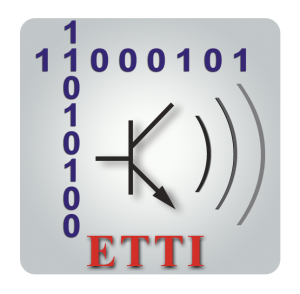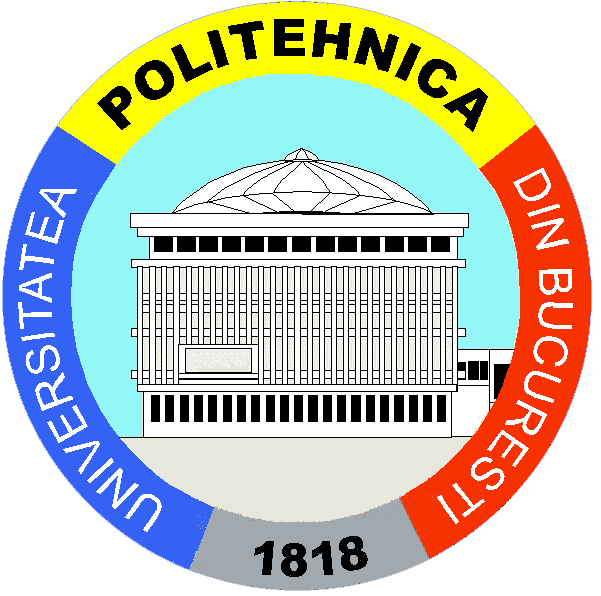
Master
AWT | CMob | CMM | CSIC | MSR | RITC | TC | PCON|TSAC
Advanced Wireless Telecommunications (AWT)
Areas of competences:
A. Theoretical and applied knowledge in the field of wireless communications.
B. Designing procedures by highlighting different levels of a wireless system or a wireless communications network.
C. Obtaining an adequate level of reliability of the communication link that ensure the required level of application quality of service (QoS) as well as mobility.
Key courses:
Advanced data transmission technologies.
Advanced digital signal processing techniques.
Mobile communications systems.
Access and broadcasting digital radio technologies.
Embedded systems.
Advanced procedures in wireless communications.
Satellite communications.
Mobile Communications (CMob)
Areas of competences:
A. Designing, implementation and management of radio networks.
B. The ability to specify mobile communications services and applications.
C. Achieving a picture of any techniques of detection and recovery of data transmitted by radio channels.
Key courses:
Mobile communications systems.
Software applications for mobile devices.
Advanced techniques in data transmissions.
Access and broadcast radio technologies.
Network and services security.
Satellite communications.
Multimedia Communications (CMM)
Areas of competences:
A. The study of transport of multimedia content via communication networks.
B. The production, acquisition, processing, monitoring, presentation and perception of multimedia content by ensuring the quality and safety of services.
C. The specification, design and development of multimedia communication applications.
Key courses:
Multimedia services and transport resource management.
Digital signal processing.
Multimedia systems.
Multimodal human-machine interfaces.
Communications systems.
Communications Integrated Circuits and Systems (CSIC)
Areas of competences:
A. Design and computer-aided analysis.
B. 3G / 4G radiocommunication systems.
C. Chip systems.
Key courses:
Hardware description language and FPGA design methodology.
Advanced techniques of digital signal processing.
Software defined radio equipment.
Design of RF integrated circuits.
Services and Networks Management (MSR)
Areas of competences:
A. Concept, design, implementation, integration and exploitation of integrated management systems for telecommunications networks and services.
B. General multi-plane architectures, systems management in telecom networks (TMN) management systems in TCP / IP (SNMP, RMON, systems based on XML technology) connectivity services, high level services, integrated services, mobility and fixed network technologies.
C. Design and use of management functions (failure detection, configuration, resource usage accounting, performance evaluation, security – FCAPS); management protocols; resource management to ensure quality in multimedia communications services, transport management (MPLS technologies, optical).
Key courses:
Integrated management systems.
Mobility of wireless networks.
Security of networks and services.
Software telecommunications.
Applications and internet services
Simulation of telecommunications networks.
Architectures for networks and services.
Telecommunications Integrated Networks (RITC)
Areas of competences:
A. The design of network architectures, interoperability, planning, networks dimensioning and design on heterogeneous supports.
B. The managementexploitation and development of networks, security implementation.
C. Design of mechanisms, subsystems and network protocols for multiple access, routing, QoS, mobility, traffic engineering, group communications, VPN etc.
Key courses:
Advanced techniques of digital signal processing.
Real-time and distributed systems.
Architectures and integrated broadband networks.
Transport resource management and quality assurance services.
Simulation of telecommunications networks.
Advanced TCP technologies.
Transport networks on optical support.
Network security. Virtual Private Networks.
Databases for telecommunications.
Internet technologies.
Telecommunications (TC)
Areas of competences:
A. The ability to follow and execute a technical project in telecommunications.
B. Achieving a comprehensive image about data transmission and reception techniques transmitted through communication channels.
C. The ability to analyze and determine the system-level specifications of equipment subassemblies and their modules.
Key courses:
Analog and digital communications.
Satellite communications systems.
Access and transport technologies.
Telecommunications services and performance evaluations.
Mobile and personal communications.
Security of networks and services.
Target group:
A dedicated master for graduates of other faculties besides ETTI, who works in telecommunications field.
Multimedia Technologies for Content Production in the Broadcasting and Communications Domain (PCON)
Areas of competences:
A. Advanced technical and technological support for studios specialized in capturing, processing and mastering digital sound and images (both traditional and digital cinema, television studios, AV production houses).
B. Design and implementation of integrated hardware / software systems.
C. In-field capturing mobile devices (sound and / or images) with storage capacities of high definition imaging (TVHD and film digital devices), high-definition sound and relavant space.
Key courses:
Multimedia and contemporary show.
Theory and practice of sound engineering.
Theory and practice of image engineering.
Advanced Software Technologies in Communications (TSAC)
Areas of competences:
A. Concept, design, implementation, integration and exploitation of software systems oriented in systems, networks and telecommunications services.
B. Definition of multi-level software architectures – including new concepts “Future Internet” (ex. “Software Defined Networking“, Information Centric Networking “); specification, design, implementation, testing and validation techniques for software subsystems; language technologies and techniques for testing and validation of software subsystems; languages, technologies and specialized tools for SW engineering oriented on communications, WEB technologies.
C. SW Engineering for the design and development of SW subsystems: communications protocols, routing and switching, quality of service insurance, mobility, resource management and integrated communications services (data, VoIP, VOD, multimedia, IPTV, P2P, etc).
Key courses:
Architecture for networks and services.
Centralized and Distributed Operating Systems.
Databases.
Telecommunication SW Engineering.
Basics for information security.
Service-oriented architectures (SOA), XML technologies, Web.
The specification, validation and SW implementation at “network” and “services” level.
Java Programming for applications in TCP / IP architectures.
Real-time and distributed systems.
Security of networks and services.
SW management systems and integrated control of networks and services.
Copyright © 2025 | Department of Telecommunications, ETTI

